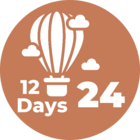I think the data doesn't validate as correct GeoJSON.
The structure for a polygon feature should be:
{
"type": "Polygon",
"coordinates": [
[
[
100,
0
],
[
101,
0
],
[
101,
1
],
[
100,
1
],
[
100,
0
]
]
]
}
Where a piece in waterarea.json is:
{
"type": "coordinates",
"coordinates": [[145.71758,
-30.83595],
[145.71769,
-30.83532],
[145.71895,
-30.8348],
[145.72022,
-30.83381],
[145.72158,
-30.83383],
[145.72241,
-30.83428],
[145.72374,
-30.83646],
[145.72404,
-30.83773],
[145.72403,
-30.83846],
[145.72028,
-30.83697],
[145.71872,
-30.83623],
[145.71758,
-30.83595]]
}
Issues are:
- type should be Polygon, not coordinates (case sensitive!)
- the array of coordinates should be nested one level deeper (rings, ring, coordinatepairs)
- polygons should follow the right-hand rule (exterior rings are counter clockwise, interior rings / holes are clockwise)
See the spec.
This works for me:
{
"type": "Polygon",
"coordinates": [[[145.71758,
-30.83595],
[145.71872,
-30.83623],
[145.72028,
-30.83697],
[145.72403,
-30.83846],
[145.72404,
-30.83773],
[145.72374,
-30.83646],
[145.72241,
-30.83428],
[145.72158,
-30.83383],
[145.72022,
-30.83381],
[145.71895,
-30.8348],
[145.71769,
-30.83532],
[145.71758,
-30.83595]]]
}
















